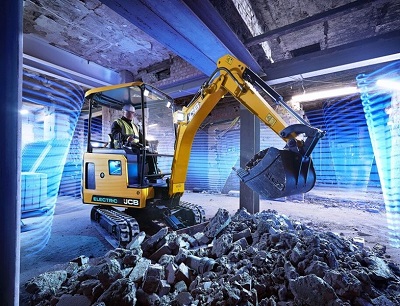According to sector consultants from abcg, a business consulting and services company, the race to electrify construction equipment is just the first step in a longer campaign to redefine how machines are designed, look, and operate
Writing in a detailed opinion piece, abcg consultants, Alan Berger and Carl-Gustaf Goransson, proposed that the universal competence of machinery is posing a problem to leading manufacturers and their ambitions to maintain their premium positions over ‘lesser’ brands.
“Construction equipment has been on a path towards commoditisation for many years, simultaneously increasing the importance of the dealer-customer relationship and challenging the premium positioned OEMs to find new ways to demonstrate their value to customers.
“Indeed, we have commented on this topic several times in recent years, noting that the difference in performance and fuel efficiency between different brand and model machines has been declining. With only a few exceptions, increments in these key buying criteria now tend to be small, and price competition has been intense when supply is in balance with demand.”
Now, change is afoot and one of the most obvious developments is the incorporation of alternative energy sources to power products. By the consultant’s count, there are more than 20 different potential energy sources that could make up the global portfolio and electric products in their various forms will represent a large part of the change.
“So, why are we talking about electric products and commoditisation at the same time? We believe that electric machines bring the potential to forestall the complete commoditisation of the bulk of the construction equipment market for at least a decade.
“The overall commoditisation effect that we see in the traditional diesel products is the result of 70+ years of refinement of the same basic technologies – diesel engines applying power through mechanical geartrains and hydraulics. After seven decades of refinement of this package, even with the advent of software control, it is increasingly difficult to come up with something that the competition has also not thought of. It’s not just the powertrain, even the fundamental shape of machines is dictated by the physical constraints that these technologies bring.”
For example, the abcg representatives considered the backhoe loader, a machine where the loader is wrapped around the engine that sticks of the front of the machine, leaving the rear the only logical place to put the backhoe loader.
“The tractor part itself is constrained by the need to fit an engine, transmission, and axle to drive the machine, while leaving a comfortable place for the operator to sit. So, what happens when you remove the diesel engine and its need to have a relatively straight line to the axle, which needs a straight line to the wheels? While mechanical energy needs to route through rigid gears and shafts and hydraulics through relatively stiff hoses, electrical energy is transmitted through wires that can bend around corners. Perhaps even more importantly, there are countless ways to control these electric systems through software.”
Currently, electrified machines are still in their infancy and most simply substitute the diesel engine for a battery and some motors. As a result, there has been little thought put into redesigning the fundamental structure of these machines and exploit the performance potential that a more software-controlled machine could offer. In addition, the pair explained, battery electric componentry is quite immature and the opportunity to optimise this creates potential for a new race to develop the best machine for each application.
Berger and Goransson concluded that electrics’ relative simplicity compared to ICE combined with the consequent lower investment required means that barriers are falling. Although, the largest OEMs are aiming at gaining first mover advantage and trying to maintain or improve their current position in the new hierarchy.
What is also clear is that Chinese OEMs hold a significant lead in electrification and while they have not been able to make significant progress penetrating certain regions, the rewriting of the machinery rulebook could be the opportunity for them to gain a significant market share foothold.




